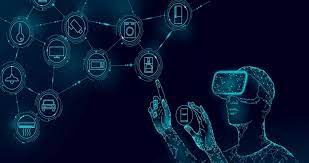Introduction
In recent years, the landscape of technology and data analytics has undergone a significant transformation with the advent of augmented intelligence software. Augmented intelligence, a concept that combines the strengths of artificial intelligence (AI) with human intelligence, has become a game-changer in various industries. In the United States, businesses are increasingly leveraging augmented intelligence to enhance data analytics processes, leading to more informed decision-making and improved operational efficiency.
I. Understanding Augmented Intelligence
A. Definition and Concept
Augmented intelligence refers to the collaboration between humans and machines to enhance cognitive abilities, automate routine tasks, and facilitate data-driven decision-making. Unlike artificial intelligence, which aims to replace human intelligence, augmented intelligence focuses on amplifying human capabilities by providing advanced tools and insights.
B. Human-Machine Collaboration
In the context of augmented intelligence, collaboration between humans and machines is crucial. While machines excel at processing vast amounts of data and identifying patterns, humans bring creativity, emotional intelligence, and critical thinking to the table. The synergy between the two leads to more effective problem-solving and innovation.
II. Augmented Intelligence Software: A Catalyst for Change
A. Advanced Analytics
Augmented intelligence software plays a pivotal role in advancing data analytics capabilities. These tools utilize machine learning algorithms to analyze large datasets, identify trends, and extract valuable insights. By automating complex analytical processes, businesses can expedite decision-making and gain a competitive edge in today’s fast-paced digital landscape.
B. Natural Language Processing (NLP)
One notable feature of augmented intelligence software is its ability to understand and process natural language. Natural Language Processing (NLP) enables machines to comprehend and generate human-like text, making it easier for users to interact with complex data sets. In the USA, industries such as healthcare, finance, and customer service are leveraging NLP-powered augmented intelligence for more effective communication and data interpretation.
III. Applications of Augmented Intelligence in the USA
A. Healthcare
In the healthcare sector, augmented intelligence has emerged as a transformative force. From diagnostic tools that analyze medical images to predictive analytics for patient outcomes, AI-driven solutions are enhancing the quality of patient care. In the USA, healthcare providers are adopting augmented intelligence software to streamline administrative processes, optimize resource allocation, and improve overall patient outcomes.
B. Finance
The financial industry in the USA is leveraging augmented intelligence to gain a competitive advantage. AI-powered algorithms analyze market trends, assess investment risks, and provide personalized financial advice. Augmented intelligence is also being used to detect fraudulent activities, ensuring the security of financial transactions and protecting the interests of both businesses and consumers.
C. Manufacturing
In the manufacturing sector, augmented intelligence is optimizing production processes and supply chain management. Predictive maintenance powered by AI helps prevent equipment failures, reducing downtime and operational costs. Additionally, augmented intelligence facilitates demand forecasting, enabling manufacturers to adjust production levels based on market trends and customer demand.
IV. Augmented Data Analytics: Transforming Decision-Making
A. Improved Accuracy and Efficiency
The integration of augmented intelligence in data analytics processes leads to improved accuracy and efficiency. By automating repetitive tasks, businesses can allocate human resources to more strategic and creative endeavors. Augmented data analytics in USA enables faster data processing, allowing organizations to respond swiftly to market changes and customer demands.
B. Enhanced Predictive Analytics
Predictive analytics, a key component of augmented data analytics, utilizes machine learning algorithms to forecast future trends and outcomes. In the USA, businesses are using augmented predictive analytics to anticipate customer behavior, optimize inventory management, and make data-driven decisions that drive growth and profitability.
V. Challenges and Considerations
A. Ethical Concerns
As augmented intelligence becomes more integrated into daily operations, ethical considerations arise. Issues related to privacy, bias in algorithms, and the responsible use of AI technologies need careful attention. In the USA, policymakers, businesses, and researchers are working collaboratively to establish ethical frameworks that govern the development and deployment of augmented intelligence.
B. Skill Gap
The widespread adoption of augmented intelligence requires a workforce with the skills to harness its full potential. The USA faces a growing skill gap in fields related to AI and data analytics. Initiatives aimed at upskilling the workforce, fostering STEM education, and promoting lifelong learning are essential to address this challenge and ensure that the benefits of augmented intelligence are accessible to all.
VI. Future Trends and Outlook
A. Integration of Augmented Intelligence in Everyday Life
As augmented intelligence continues to evolve, its integration into everyday life is expected to increase. From smart homes and virtual assistants to personalized recommendations in e-commerce, the USA is likely to witness a broader application of augmented intelligence in various aspects of daily living.
B. Continued Innovation
The field of augmented intelligence is dynamic, with ongoing research and innovation driving its evolution. Advancements in areas such as explainable AI, reinforcement learning, and human-AI collaboration are poised to shape the future of augmented intelligence. Businesses in the USA that stay at the forefront of these developments will be better positioned to capitalize on emerging opportunities.
VII. Real-world Examples of Augmented Intelligence Implementation
A. Customer Service
In the realm of customer service, augmented intelligence is revolutionizing interactions between businesses and consumers. Chatbots powered by AI algorithms handle routine queries, allowing human agents to focus on more complex issues. Companies in the USA are deploying these AI-driven chatbots on websites, social media platforms, and mobile apps to provide instant and efficient customer support.
B. Education
The education sector is also witnessing the integration of augmented intelligence to enhance learning experiences. Personalized learning platforms use AI algorithms to adapt to individual student needs, providing tailored content and assessments. In the USA, educational institutions are exploring augmented intelligence applications for student engagement, performance tracking, and identifying areas where additional support is needed.
VIII. Augmented Intelligence and Cybersecurity
The USA, being at the forefront of technological innovation, faces growing cybersecurity challenges. Augmented intelligence is playing a crucial role in fortifying digital defenses. AI-powered threat detection systems analyze vast amounts of data to identify and mitigate potential security breaches in real time. This proactive approach is essential in safeguarding sensitive information and maintaining the integrity of digital infrastructure.
Conclusion
Augmented intelligence software and augmented data analytics are reshaping the technological landscape in the USA. The collaborative synergy between humans and machines, facilitated by these advancements, is driving efficiency, innovation, and informed decision-making across diverse industries. As the nation navigates the challenges and opportunities presented by augmented intelligence, a thoughtful and ethical approach is crucial to harness its full potential and ensure a future where technology empowers individuals and organizations alike.

